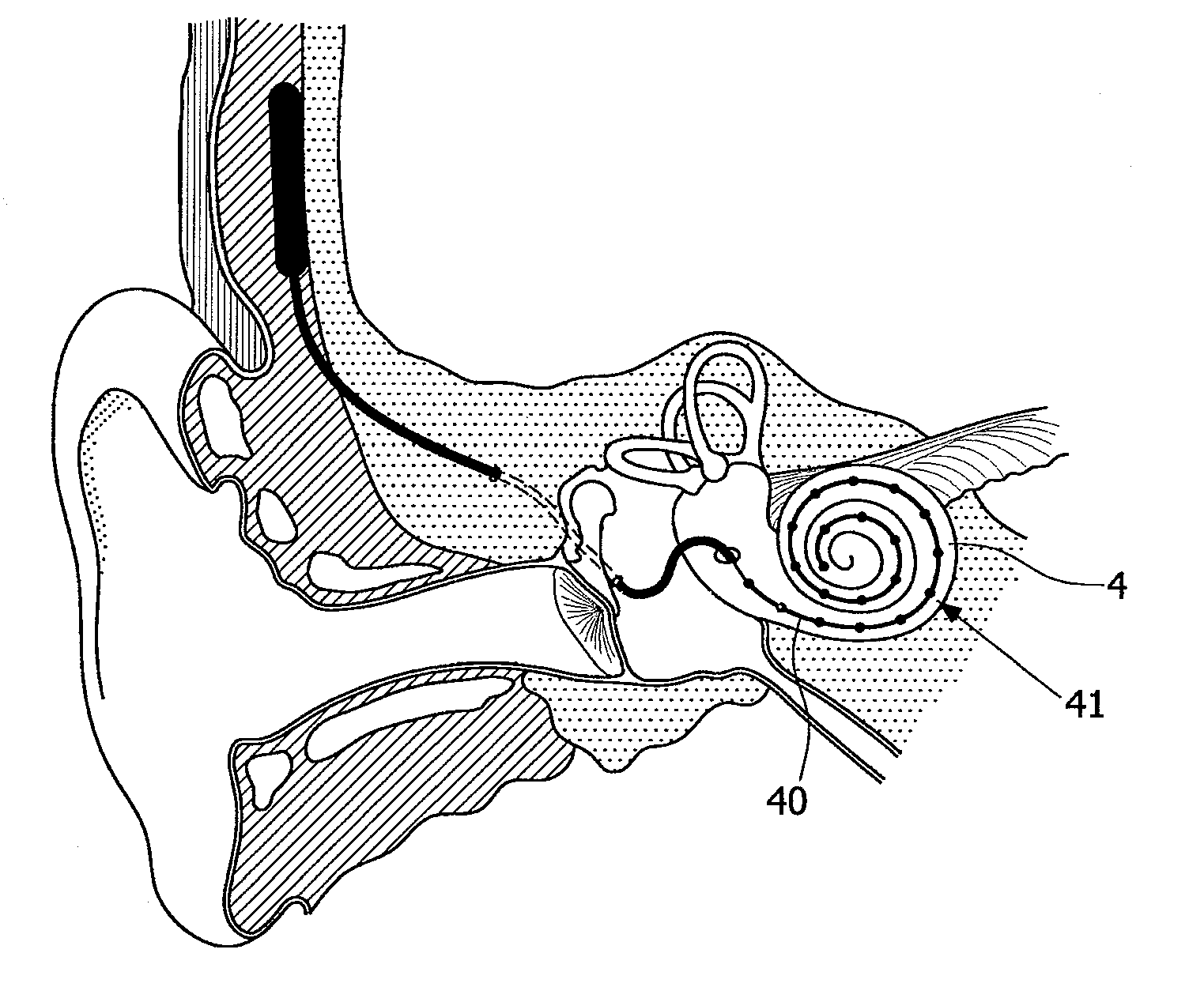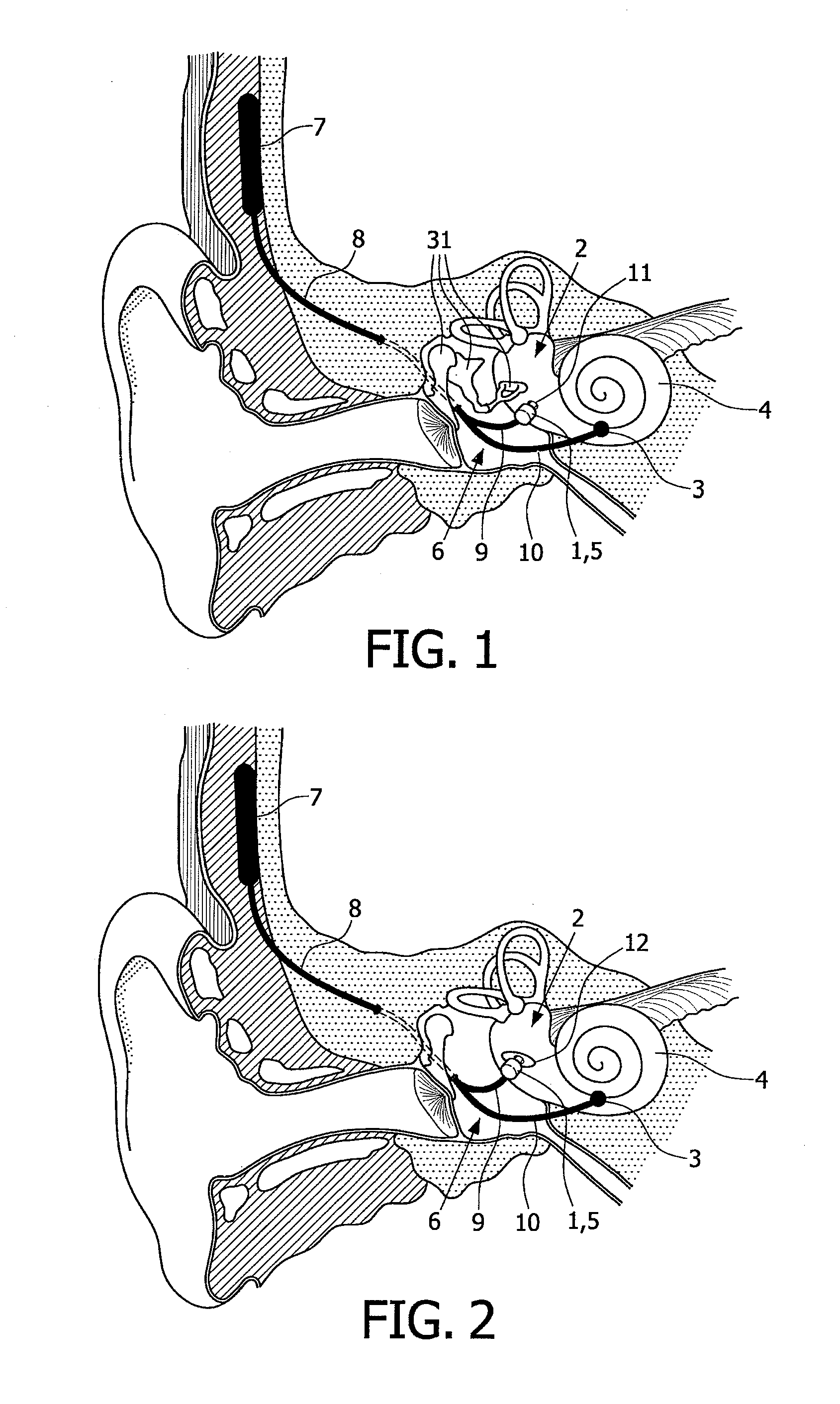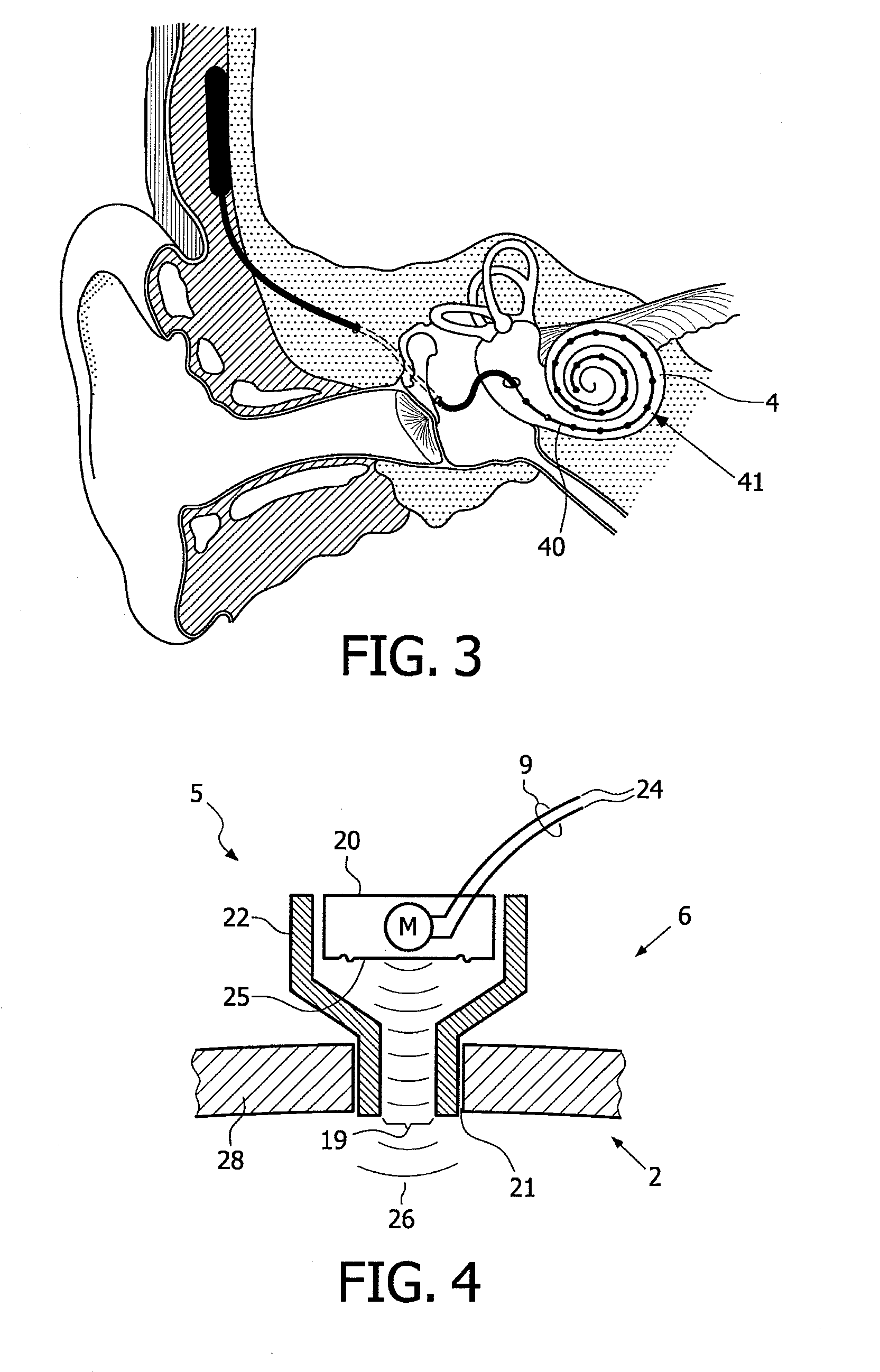Device and method for improving hearing
a technology of hearing aids and hearing aids, applied in the direction of ear support sets, electrotherapy, artificial respiration, etc., can solve the problems of normalising the functional status of the conductive part of the middle ear, and incurring the risk of inner ear infections, meningitis or total hearing loss,
- Summary
- Abstract
- Description
- Claims
- Application Information
AI Technical Summary
Benefits of technology
Problems solved by technology
Method used
Image
Examples
Embodiment Construction
[0028]One embodiment of the invention is an implantable device for improving hearing in a subject comprising:[0029]a vibration generator (5) comprising an output region (19) configured to apply vibrational stimulation to the inner ear (2) fluid,[0030]a proximal electrode (1) configured for physical attachment to a wall enclosing the inner ear (2) at a location proximal to the output region, and[0031]a separate distal electrode (3) configured to make electrical contact with the auditory nerve (4).
[0032]Another embodiment of the invention is an implantable device as described above, wherein the vibration generator comprises:[0033]an electromechanical actuator (20),[0034]a vibrating surface (25) co-operatively connected to the electromechanical actuator (20), which provides vibrational energy, and[0035]a frame (22) configured to position the vibrating surface (25) to direct vibrational energy therefrom to the output region (19).
[0036]Another embodiment of the invention is an implantabl...
PUM
 Login to View More
Login to View More Abstract
Description
Claims
Application Information
 Login to View More
Login to View More - R&D
- Intellectual Property
- Life Sciences
- Materials
- Tech Scout
- Unparalleled Data Quality
- Higher Quality Content
- 60% Fewer Hallucinations
Browse by: Latest US Patents, China's latest patents, Technical Efficacy Thesaurus, Application Domain, Technology Topic, Popular Technical Reports.
© 2025 PatSnap. All rights reserved.Legal|Privacy policy|Modern Slavery Act Transparency Statement|Sitemap|About US| Contact US: help@patsnap.com



